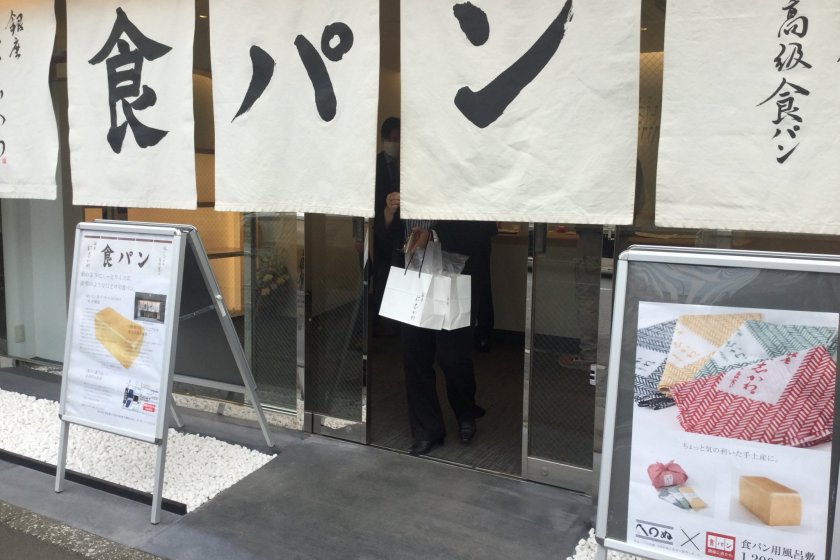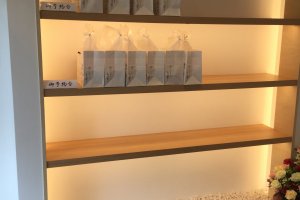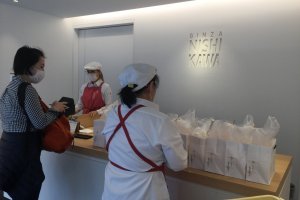The Akihabara location is permanently closed. See here for other locations.
Walking away from the bustling electric district of Akihabara, I chanced upon a shop that seemed out of place with its quiet elegance. Outside, the noren or traditional shop curtains displays the words 食パン (shokupan). Intrigued and enticed by the delicious smell wafting out, I went in to check out the shop's bread selection.
Inside, the shop was practically empty. No rows of asssorted breads on display; only white paper bags on clean, Zen shelves. Customers walked out with one or two of those white paper bags. Then, it hit me. This was no ordinary bread shop. This is the shokupan shop, a shop that sells one, and only one thing, elevating the word "specialty" to new heights.
Shokupan is probably the most common type of bread in Japan. In the supermarket, they are packaged as square shaped slices of pillowy white bread made of white flour, milk, margarine and sugar. Half loaves can go as cheap as ¥100.
At ¥800 a loaf (excluding tax), Ginza Nishikawa's shokupan is probably not your daily bread. But you get what you pay for. This premium shokupan is sweetened with honey. Instead of milk and margarine in cheaper commercial versions, only fresh cream and butter are used, blended with the finest Canadian flour.
Ginza Nishikawa's point of pride is the water used to prepare the dough. As sake, soba and tofu makers know, the quality of water has the power to control the taste of the final product. Alkaline ionized water has a higher pH and its use in bread making results in a silkier, sweeter, lighter bread.
The shop recommends first tasting the bread as it is to enjoy the delicate fragrance and texture of freshly baked shokupan. On the second day after purchase, the light crust settles and sweetness increases. On the third day, the shop recommends toasting the bread so the outside becomes crisp while the inside remains chewy soft.




































